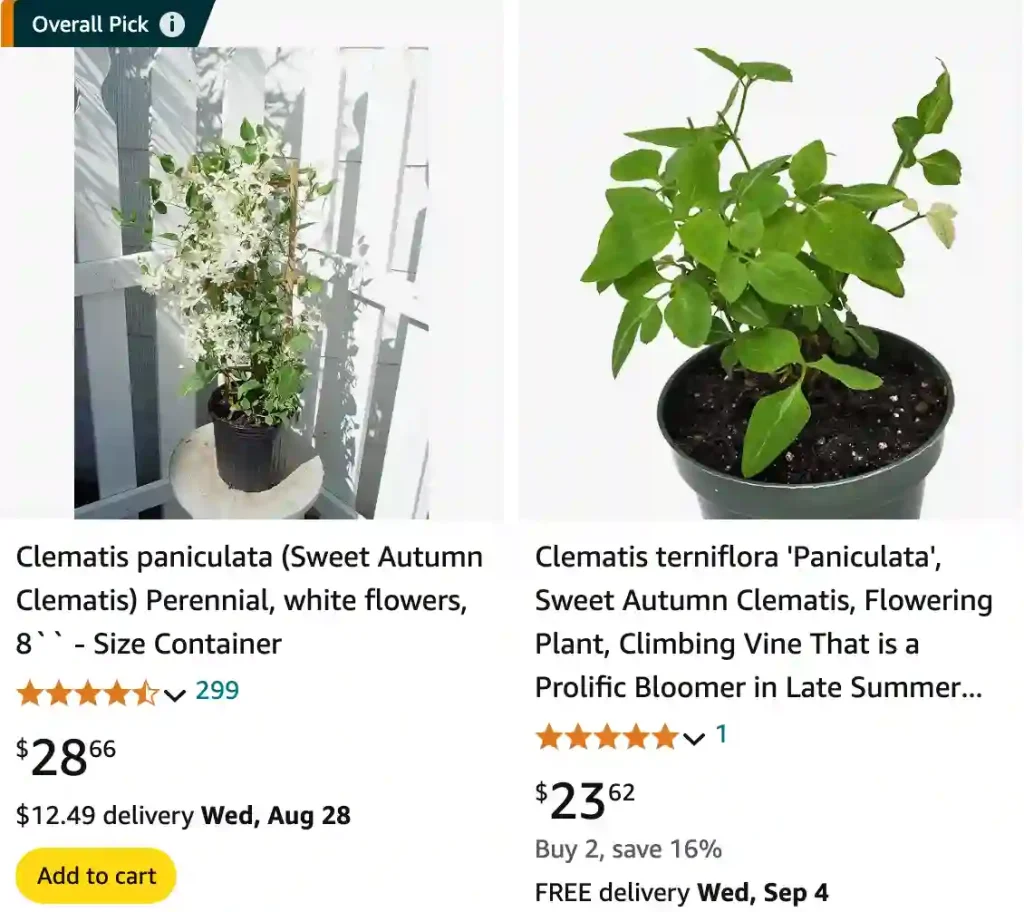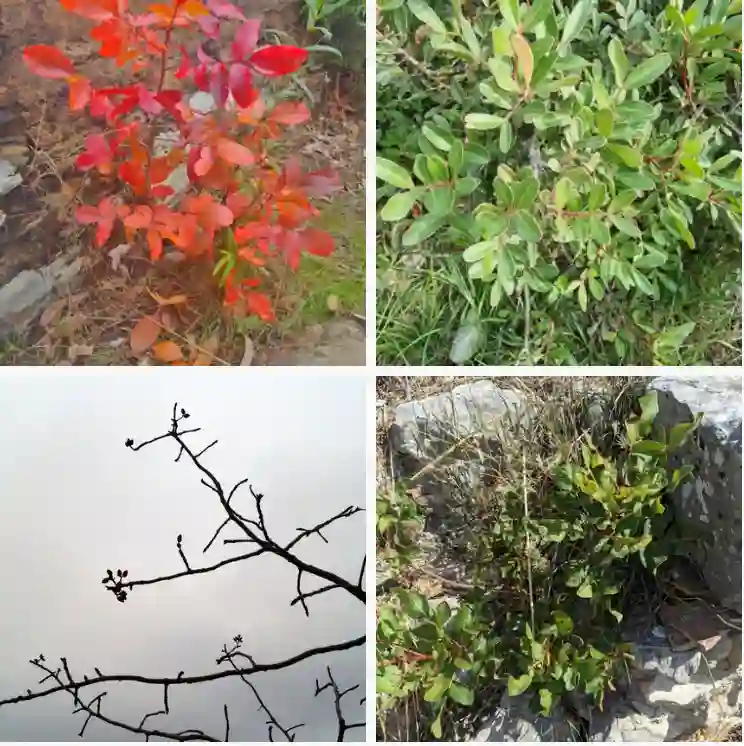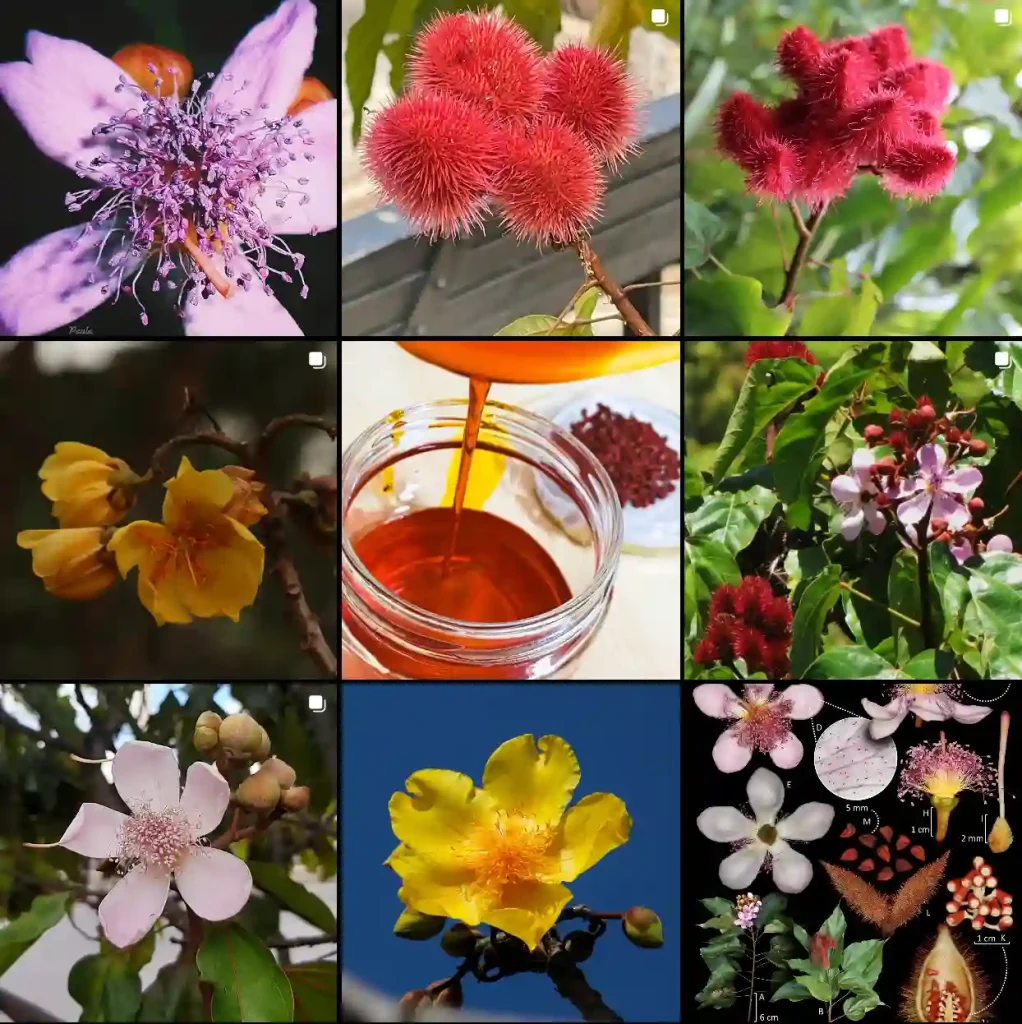
Frequently Asked Questions About Sweet Autumn Clematis
I’ve had a soft spot for Sweet Autumn Clematis for years now, and it’s one of those plants that never ceases to amaze me. With its fragrant white flowers that bloom in late summer and early fall, it brings a touch of elegance and a delightful scent to any garden. If you’re considering adding this beauty to your garden, you probably have some questions. Let me guide you through the most frequently asked questions about Sweet Autumn Clematis, from its care and propagation to its potential issues and benefits.
391 Species in Genus Clematis
Is Sweet Autumn Clematis Invasive?
Yes, Sweet Autumn Clematis can be invasive in some areas. This vigorous climber can quickly spread, covering fences, trellises, and even nearby plants. It produces numerous seeds that can self-sow and establish themselves in unwanted places. To manage its invasiveness, it’s crucial to deadhead spent flowers before they go to seed and to keep an eye on its growth.
How to Propagate Sweet Autumn Clematis?
Propagating Sweet Autumn Clematis is relatively easy. You can propagate it through seeds, cuttings, or by layering. The most common method is by taking softwood cuttings in the spring or early summer. Cut a healthy stem about 4-6 inches long, remove the lower leaves, and dip the cut end into rooting hormone. Plant the cutting in a pot filled with well-draining soil, water it well, and cover it with a plastic bag to retain moisture. Keep it in a warm, bright place, and roots should develop in a few weeks.
When Does Sweet Autumn Clematis Bloom?
Sweet Autumn Clematis typically blooms in late summer to early fall, around August to October. Its white, star-shaped flowers cover the plant in a stunning display, and their sweet fragrance is a highlight of the garden during this time. The bloom period can vary slightly depending on the climate and growing conditions.
When to Plant Sweet Autumn Clematis?
The best time to plant Sweet Autumn Clematis is in the spring or early fall. Planting during these times allows the plant to establish its roots before the extreme heat of summer or the cold of winter. Ensure you plant it in well-draining soil, with the crown just below the soil surface.
When to Prune Sweet Autumn Clematis?
Pruning Sweet Autumn Clematis is essential for maintaining its shape and encouraging more blooms. The ideal time to prune is in late winter or early spring before new growth begins. Cut the plant back to about 12-18 inches above the ground. This hard pruning encourages vigorous new growth and a more abundant bloom in the fall.
Can Sweet Autumn Clematis Grow in a Pot?
Yes, Sweet Autumn Clematis can grow in a pot, but it requires a large container with good drainage. Use a high-quality potting mix and provide a trellis or support for the vine to climb. Regular watering and feeding are essential since potted plants can dry out more quickly than those in the ground.
Can Sweet Autumn Clematis Grow in Shade?
Sweet Autumn Clematis prefers full sun to partial shade. It will tolerate some shade, but it may not bloom as profusely. For the best flowering, plant it where it will receive at least 6 hours of sunlight a day.
Do You Cut Back Sweet Autumn Clematis?
Yes, cutting back Sweet Autumn Clematis is recommended to control its size and shape. As mentioned earlier, pruning should be done in late winter or early spring. Regular pruning also helps prevent the plant from becoming too leggy and encourages a more robust bloom.
How Fast Does Sweet Autumn Clematis Grow?
Sweet Autumn Clematis is known for its rapid growth. It can grow up to 10-15 feet in a single growing season. This fast growth rate makes it an excellent choice for quickly covering fences, trellises, or arbors, but it also means you need to monitor and control its spread.
How to Care for Sweet Autumn Clematis?
Caring for Sweet Autumn Clematis involves regular watering, especially during dry periods, as it prefers consistently moist soil. Mulching around the base helps retain moisture and keep the roots cool. Feed the plant with a balanced fertilizer in the spring to encourage healthy growth. Prune it back annually to manage its size and shape.
How to Get Rid of Sweet Autumn Clematis?
If Sweet Autumn Clematis becomes too invasive, you may need to remove it. Cutting the vines back to the ground and digging up the roots can help control it. Be diligent about removing any seedlings that sprout up. In severe cases, a systemic herbicide may be necessary to kill the roots, but this should be a last resort.
Is Sweet Autumn Clematis a Perennial?
Yes, Sweet Autumn Clematis is a perennial vine. It comes back year after year, providing a reliable display of blooms each fall. Its perennial nature makes it a great long-term addition to the garden.
Is Sweet Autumn Clematis Deer Resistant?
Sweet Autumn Clematis is moderately deer-resistant. While deer may occasionally nibble on the leaves, they generally avoid this plant, especially when other more appealing options are available.
Is Sweet Autumn Clematis Evergreen?
No, Sweet Autumn Clematis is not evergreen. It loses its leaves in the fall after the blooming season and goes dormant over the winter. However, it quickly comes back to life in the spring with fresh, green growth.
Is Sweet Autumn Clematis Poisonous?
Sweet Autumn Clematis is mildly toxic if ingested. It contains compounds that can cause gastrointestinal upset in humans and pets. It’s best to plant it out of reach of curious children and pets to prevent accidental ingestion.
What Does Sweet Autumn Clematis Smell Like?
One of the most delightful aspects of Sweet Autumn Clematis is its fragrance. The flowers have a sweet, vanilla-like scent that fills the air during its bloom period. It’s a lovely addition to gardens where you can enjoy its fragrance up close.
Sweet Autumn Clematis vs. Virgin’s Bower?
Sweet Autumn Clematis (Clematis Terniflora) and Virgin’s Bower (Clematis Virginiana) are often confused due to their similar appearance. Both have white flowers and are vigorous climbers. However, Sweet Autumn Clematis blooms later in the season and has a more fragrant flower. Virgin’s Bower typically blooms in mid-summer and is native to North America, whereas Sweet Autumn Clematis is native to Asia.
Sweet Autumn Clematis vs. Star Jasmine?
While both Sweet Autumn Clematis and Star Jasmine have fragrant white flowers, they are quite different plants. Star Jasmine is a woody, evergreen vine with a stronger, more tropical scent. Sweet Autumn Clematis, on the other hand, is a deciduous climber that loses its leaves in winter. Both can add a beautiful fragrance to the garden, but they serve different aesthetic and functional roles.
Can You Grow Sweet Autumn Clematis Indoors?
Growing Sweet Autumn Clematis indoors is not practical due to its vigorous growth habit and size. It’s best suited for outdoor planting, where it has space to spread and climb.
Common Problems with Sweet Autumn Clematis
Like any plant, Sweet Autumn Clematis can encounter problems. It may be prone to pests such as aphids and spider mites. Fungal diseases like powdery mildew can also affect it, especially in humid conditions. Proper spacing, adequate air circulation, and regular monitoring can help prevent these issues.
Benefits of Planting Sweet Autumn Clematis
Sweet Autumn Clematis offers numerous benefits. Its rapid growth makes it ideal for covering fences or unsightly areas quickly. The fragrant flowers provide a sensory delight, and its ability to attract pollinators like bees and butterflies makes it a valuable addition to a pollinator-friendly garden. Its deer resistance is another bonus for gardeners in areas with high deer populations.
In conclusion, Sweet Autumn Clematis is a versatile and beautiful plant that can bring much joy to the garden. By understanding how to care for it and manage its growth, you can enjoy its stunning blooms and fragrance year after year. Whether you’re a seasoned gardener or a beginner, Sweet Autumn Clematis is a wonderful choice for adding beauty and fragrance to your outdoor space.
If i die, water my plants!



